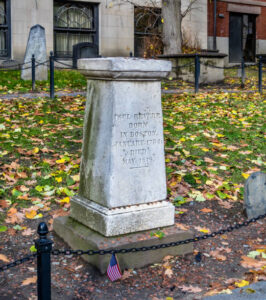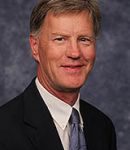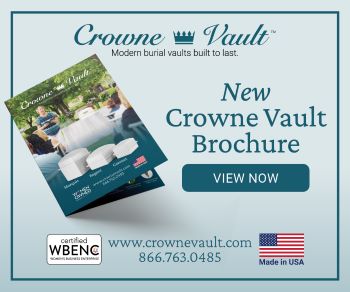Permanent Memorialization: What does it mean in today’s world?

Paul Revere grave site in the Granary Burying Ground cemetery – Freedom Trail Site – Boston, Massachusetts, USA
On the same day last week three different articles or press releases came to my inbox and those pieces of literature formed a mental Venn Diagram for me about cremation and memorialization. The articles, taken together made me think about the continuing growth of cremation and what will be done with the cremated remains of those who choose that type of disposition moving forward.
I’ve said this before, I’m a big advocate of “Permanent Memorialization” in a designated cemetery with a type of monument or plaque signifying that a life has been lived. I’ve been helped in my grief walk by being able to go to the cemetery and visit those places of my relatives and friends. It just seems to be a permanent reminder that those people “lived”. To do anything less just seems so trivial to me.
I do understand, however, that not everybody has that seem feeling as I do.
So, what articles did I receive on the same day last week:
- Cremation Association of North America’s (CANA) notice of a session at their upcoming national convention entitled, “Built to Last: How to Breath New life into Cemeteries”.
- An email from the National Funeral Director’s Association (NFDA) indicating that by 2045 the United States cremation rate will reach 81.4% of all deaths.
- An article from True North which named finalists in a Canadian competition for start-up companies. One of the finalists is a company called AWAKE which deals with a “Living Cemetery”, “Celebrations of Life”, and a “Planting Kit” which can be mixed with cremation remains to form, what they call, “a better and sustainable form of a soil”, according to the company.
I’ve got no real answers today, but here are some thoughts to ponder on the question of what to do with cremated remains, especially as cremation seems to become more prevalent and there is an ever-growing number of memorial options for the cremated remains:
- There’s no doubt that cremation is a popular choice for final disposition. What’s not so clear is what families that choose cremation want to do with the remains of that cremation. CANA’s press release mentions that “nearly one in four U.S. households have human cremated remains in their homes”. . . .They calculate that number to be about 21.9 million homes.
- According to CANA’s press release, Foundation Partners Group has found a way to turn 30% of all cremations into cremations with permanent memorialization. That’s a number they say has doubled over the past 5 years.
- AWAKE, much like Better Place Forests in the United States, has a sustainable alternative cemetery under construction in Ontario, Canada.
- AWAKE offers a “Planting kit” that they say will “sustainably turn their ashes to earth, and nourish the environment wherever they are.”
Here is information on CANA’s seminar entitled “Built to Last: How to Breathe New Life into cemeteries.”
Here is the website for AWAKE.

Tom Anderson
Funeral Director Daily
Funeral Director Daily take: While I’m an advocate of permanent memorialization with recognition I also understand that “permanent” is a relative term. For instance, there are Civil War soldier monuments in our local cemetery in which the engraving has worn away and is no longer recognizable. . . . so, you would have to say they did not stay “permanent”.
There are others that call “Online Memorials” permanent. . . . given our technology advances will they be? I remember 8-track and cassette tapes prior to DVD’s. . . .Oh, and does anybody still use DVD’s?
So, how permanent is permanent? My great-grandfather was buried in 1905 at our local cemetery. . . . That’s 118 years ago but in another 118 years I’m guessing that his monument will be hard to read, and even if you could read it, who around this community will have any relevance to him?. . . Yet, whenever I’m in Boston I love seeing Paul Revere’s grave and monument from 1818 — it seems to give relevance to the fact that he indeed lived and even if he did not do the famous ride exactly as Henry Wadsworth Longfellow portrayed, he was one of the Sons of Liberty that played a part in America’s independence story from Great Britain.
Paul Revere and his Midnight Ride: What really happened.
Or what about seeing the graves of George and Martha Washington at Mount Vernon? Maybe our first President didn’t always tell the truth or maybe he didn’t chop down the cherry tree. . . but seeing his grave, I believed he “Lived”.
And, seeing the tomb of the 13th Apostle, Matthias, in Trier, Germany, certainly gave me relevance to the time of Christ and the “truth” of the Bible. So, permanent memorialization, at times, can make a real difference in our belief about history. . . I think it helps that knowing that these people are memorialized, we actually understand that they “Lived”.
I have witnessed, however, a change of this “Permanent Memorialization” to a memorialization of “Personal Reflection”. No longer do we see all loved ones put up a big public monument or tombstone, but they memorialize in a more individual way — such as with jewelry or tattoos. It seems to me that this “Personal Memorialization” is taking over the idea of “Permanent or Public Memorialization” by many people.
I don’t really know what is driving that philosophy, but I believe it is okay also. We’ve moved on from the time that all deaths require the same type of memorialization. As funerals or celebrations of life have become more unique, I think how each of us memorializes a loved one over time is becoming more and more unique.
Funeral businesses, crematories, and cemeteries that want to stay relevant need to know that. Different families. . . and even different family members from the same family may have differing ways to memorialize. The better that we recognize that each individual way is okay, the better we will be as businesses.
More news from the world of Death Care:
- Propel seeks its ride-or-die amid industry consolidation. Australian Financial Review
- Exploring the trend of human composting: An alternative to traditional burials. The Beaumont Enterprise (TX)
- Oversight of Arizona funeral industry moves to Department of Health Services. KTAR News Raido (AZ)
Enter your e-mail below to join the 3,308 others who receive Funeral Director Daily articles daily:
“A servant’s attitude guided by Christ leads to a significant life”






















It’s refreshing to see a discussion on the significance of memorialization in our modern society. Your thoughtful exploration of how we remember and honor loved ones in today’s fast-paced world is much appreciated. The way you blend traditional practices with contemporary perspectives is insightful and inspiring. Your blog encourages us to reflect on the enduring value of memorialization in our lives. Keep up the excellent work, and I look forward to reading more from you!